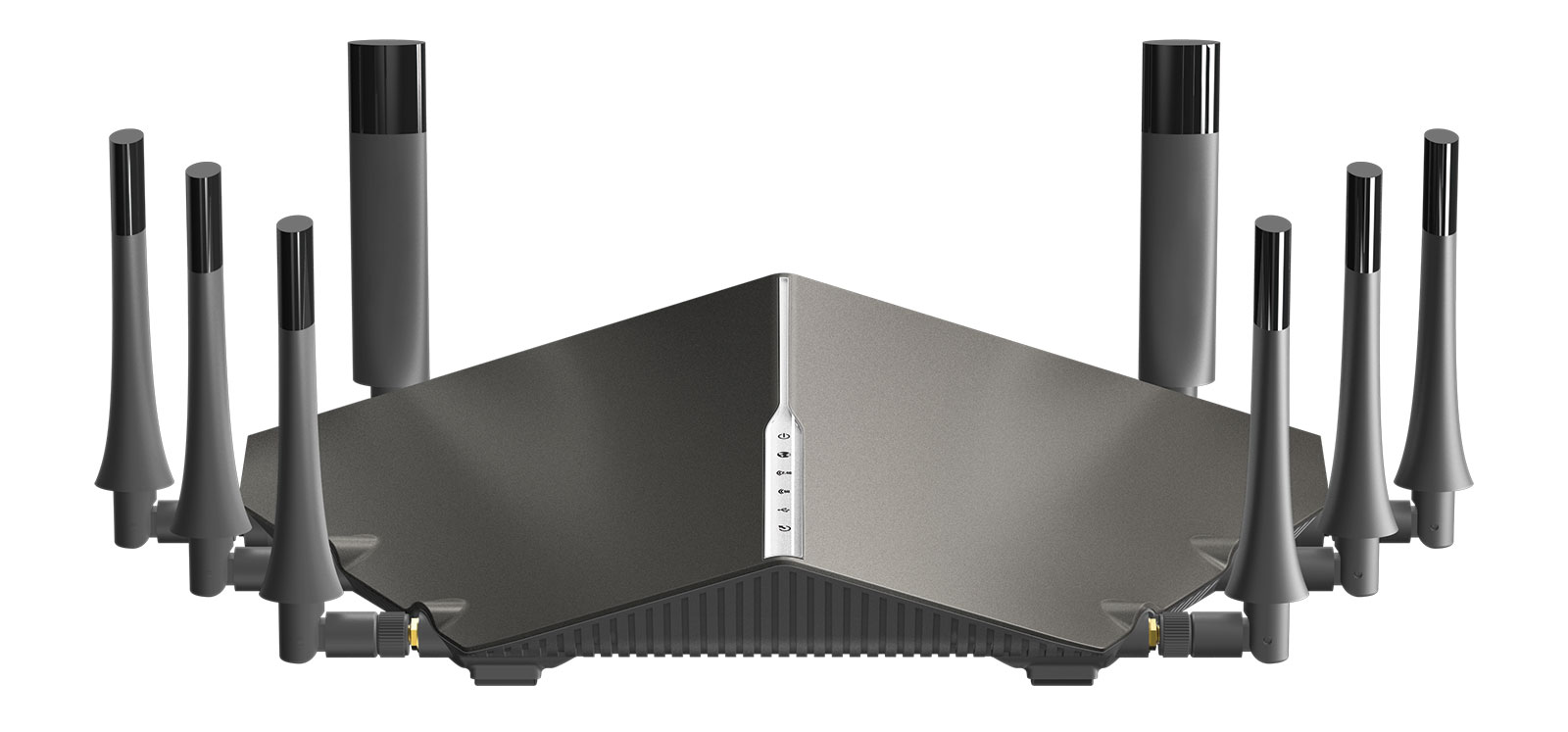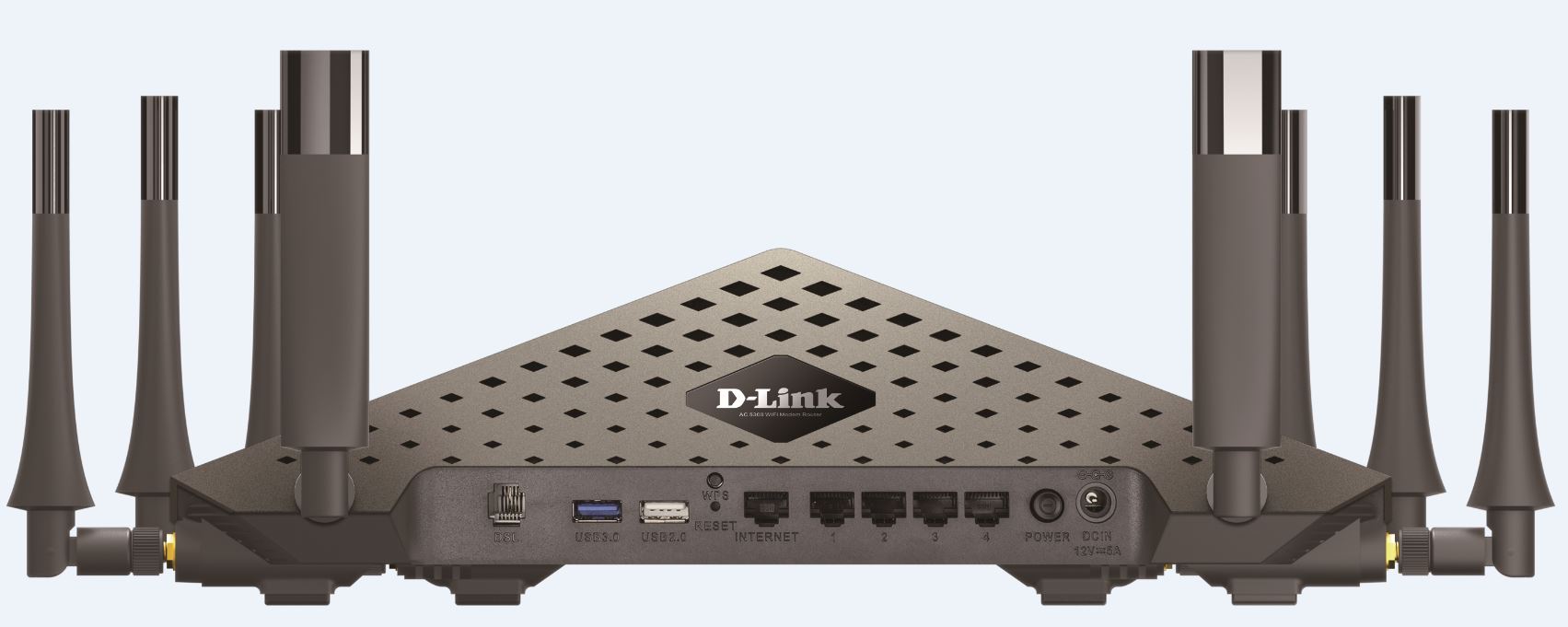They arrived at our office days apart, the new Netgear Orbi Pro SRR60 and the D-Link AC 5300 MU-MIMO modem router, with both organisations claiming that they are their fastest ever routers.
So, we put them to the test across two ADSL networks, from Telstra and TPG in a busy office environment that has numerous devices connected to the networks, and while both the Netgear and D Link offerings were close there was only one winner.
D-Link’s new modem router – the AC5300 MU-MIMO Cobra, is the fastest ever produced by the Taiwanese Company who are well known for their network capabilities and while the device looks a lot like a spider with long hairy legs the Netgear Orbi Pro on the other hand is sleek and extremely easy to configure.
Both devices deliver the latest in MIMO networking technology.
What Netgear have gone for is looks and easy configuration while D Link has gone for speed and reach.
Inside the Orbi Pro box was an extender, the D Link Cobra comes with no extender, but it did deliver excellent reach across multiple offices.
When we logged onto both routers from four offices or 28 metres away it was the D-Link Cobra that delivered superior speeds and that was through 3 walls of office partitioning including concrete walls.
Both devices also performed better than the new Google Wi Fi offering.
While Netgear’s eye-catching Orbi looks the part, we found that when we initially tried to configure the device we were unable to get access resulting in us having to do a system reset.
Within minutes of resetting the system we were able to reconfigure the device name, set passwords and be operational quite quickly.
With the D Link router, we had problems initially connecting with the Internet this was due to us initially configuring the device via a Telstra Gateway router. When were nominated to connect via a DHCP connection the device fired up in seconds.
What is interesting is how the Orbi Pro came about, apparently, Netgear business customers saw their original Orbi home offering for what it was, a home router.
When Netgear approached business customers they found that they needed extended range and easy configuration as many did not have dedicated, IT staff.
The Orbi Pro comes as a base router and Satellite and costs $849 according to Scorptec, which is expensive considering the D Link Cobra offering is only $649 from the same retailer.
Both routers support tri-band 802.11ac on 2.4GHz and two 5GHz channels (one of the latter being dedicated to between-device ‘backhaul’ communication) via six internal antennas, delivering a maximum combined wi-fi speed of 3Gbps.
In three extensive tests across two networks the D-Link Cobra was the clear winner across an ADSL network. The router was not only faster when
it came to uploads and downloads it delivered superior reach through walls and 30 metres away from the router.
The Orbi Pro is more expensive than a conventional router, and most rival mesh routers which could be an issue especially as a router that is $200 cheaper delivers superior performance.
What sets the Cobra DSL-5300 apart is that it has a built-in VDSL2 and ADSL2+ modem along with a dedicated Gigabit WAN (wide area network) port and four Gigabit LAN (local area network) ports.
While some people will go for the aesthetic look of the Netgear offering it is the spider looking antennas of the D Link offering that delivers the best performance it also has Wave 2 wireless support built into the box.
This helps one to ramp the speed to an impressive 5.3Gbps which we intend to test over a NBN network later this week.
The Cobra also has PowerZone which is why we believe it was able to deliver superior reach in our office which is in a concrete building in North Sydney.
Under the hood is a 1.8Ghz quad-core processor and the latest MU-MIMO Wave 2 Tri-Band wi-fi which means you can handle multiple people in your home streaming 4K video, lag-free online gaming and high-quality audio streaming throughout the home simultaneously.
With D-Link’s SmartConnect technology, the Cobra modem router automatically assigns your device to the best and clearest band available at that time.
Intelligent Traffic uses a QoS (quality of service) engine to select the fastest Wi-Fi for every device in your home. This prevents older devices from affecting the overall performance of the network.
Advanced SmartBeam Forming also improves coverage by directing the bandwidth to your devices as you move around in your home which means you can still stream video, surf the web and play your online games from anywhere in the house without a noticeable loss in performance.
Conclusion.
The Cobra looks ugly when compared to the new Netgear Orbi Pro and while both devices were close it was the D Link Cobra that delivered faster speeds and greater reach. It’s also $200 cheaper which for many small businesses could be the factor that pulls it over the line.
I also believe that Netgear’s objective of delivering a “pretty” router Vs a practically boots and all kick arse router is what has restricted the capability of their Orbi Pro.


